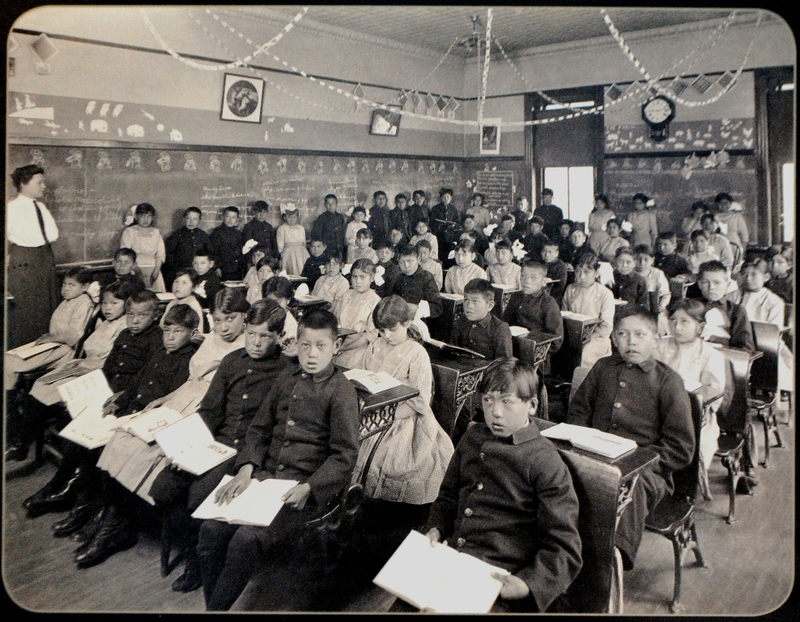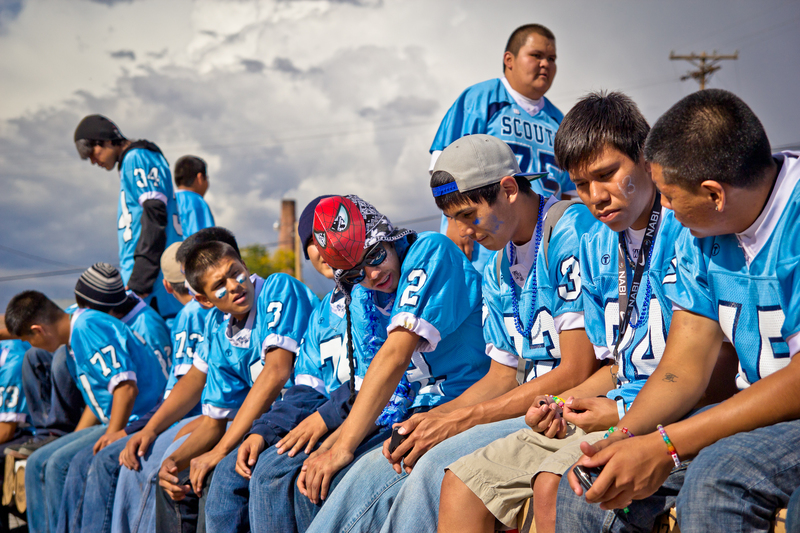Education on Reservations
Following the creation of Reservations as determined by the Indian Appropriation Act of 1851, White Americans had effectively separated Natives from the rest of society on their ancestral lands, but the hope for assimilation still remained. In the case of the Navajo, their 1868 Treaty with the United States permitted the U.S. to construct railroads through their land, as well as mandating that the Navajo have their children schooled. As Natives didn’t have “school” in the Anglo-Saxon sense, Indian Boarding schools began to pop up across the nation. The most famous three being the Carlisle Indian Industrial School in Pennsylvania, the Haskell United States Indian Industrial Training School in Kansas, and the Perris Indian School in California. Parents were forced to send their children off to these boarding schools, to not see or hear from them in years.
At said schools, children were forced to reject their cultural history, being restricted from having long hair or speaking their native language. Instead in these military-inspired schools, students were harshly disciplined from acting out of line, being beat or whipped to instill fear in them. Treatment of students varied greatly from school to school, but at the worst of these institutions, children were primarily neglected, being given minimal amounts of food or places to sleep. The number of children who died due to tuberculosis and related diseases is unknown to this day, but it is estimated around 10,000. Chief Manuelito, a leader of the Navajo people who greatly encouraged the implementation of education, had two of his own sons die from disease in boarding schools.
The philosophy of these schools were very directly the appropriation of Native citizens into white society. General Richard Pratt, founder of the first Boarding School in Carlisle, believed that Natives had the ability to become useful members of white American society is infamous for his quote, “A great general has said that the only good Indian is a dead one, and that high sanction of his destruction has been an enormous factor in promoting Indian massacres. In a sense, I agree with the sentiment, but only in this: that all the Indian there is in the race should be dead. Kill the Indian in him, and save the man.”
This mindset was held in place for an entire century of American History, up until the Civil Rights movements of 1964. The right to self determination for minorities were being championed by heros such as Martin Luther King Jr, Malcolm X, and Rosa Parks. With the wave of civil liberties and the changing of the times, the Native identity was beginning to be embraced by America. However, the damage had been done. Many members of the population have lost the ability to speak in their native languages, and low funding continues to plague the native school systems.
Today, the education in Native American reservations looks very similar to the rest of the country. Students have opportunities to play sports and participate in clubs and even learn their Native languages, especially for younger age groups. The main struggle for the American Indian community in today’s age is access to higher education following high schools. While there is access to Tribal Colleges and Universities, only between 6% to 17% of Natives in the 25 to 29 age range hold a bachelor's degree. A large portion of this is believed to be attributed to low funding of said institutions. Even though these colleges receive $8,000 per student in attendance, it is still not enough to grant proper scholarships to many low-income members of the Native community.



